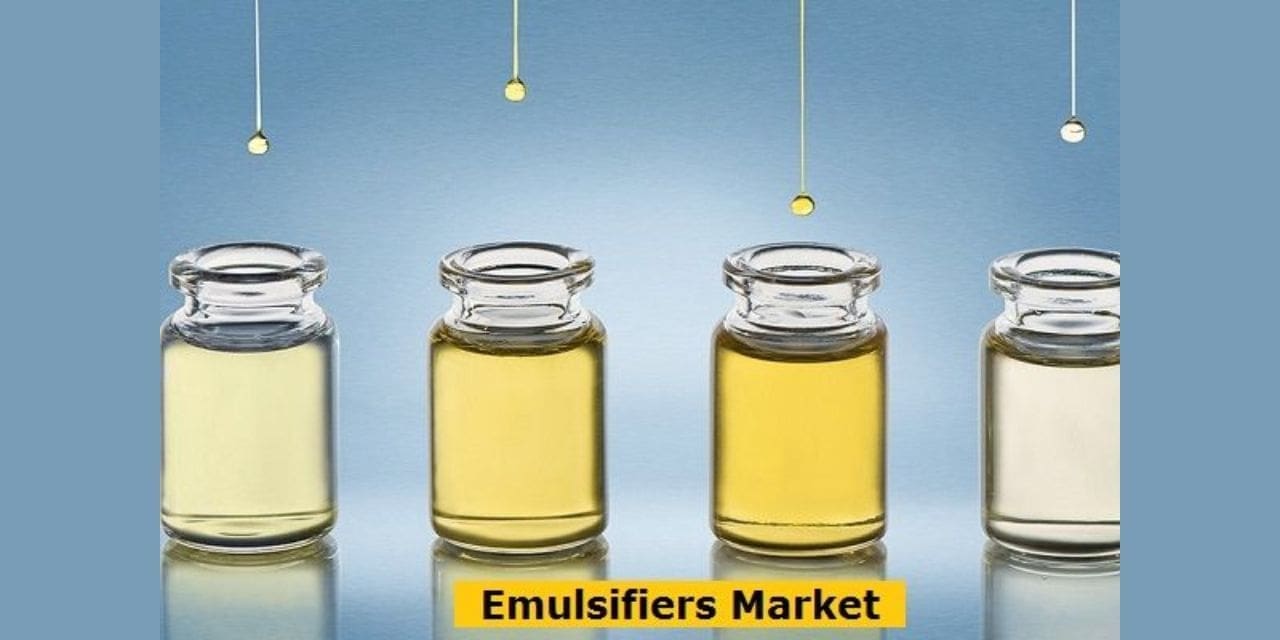The report “Emulsifiers Market by Source (Bio-Based, Synthetic), Application (Food, Cosmetics & Personal Care, Oilfield Chemicals, Pharmaceutical, Agrochemicals), and Region (North America, APAC, Europe, Middle East & Africa, South America) – Global Forecast to 2027″, global emulsifiers market size is projected to reach USD 13.1 billion by 2027 from USD 9.1 billion in 2022, at a CAGR of 7.6% during the forecast period. The rising need for emulsifiers in developing nations like India, China, Brazil, and others is due to the increased demand for processed food and beverages and the growth of the cosmetics and personal care industry. Also, the rising awareness of health and wellness is driving demand for natural and organic emulsifiers.
Browse
• 251 Market data Tables
• 48 Figures
• 260 Pages and in-depth TOC on “Emulsifiers Market – Global Forecast to 2027”
Some of the prominent key players are:
· BASF SE (Germany)
· Archer Daniels Midland (ADM) (US)
· Cargill, Incorporated (US)
· Evonik Industries AG (Germany)
· Kerry Group plc (Republic of Ireland)
· Solvay (Belgium)
· Royal DSM (Netherlands)
Opportunity: Growing demand for plant-based emulsifiers
The demand for plant-based emulsifiers has been increasing in recent years due to a rise in awareness of the health and environmental benefits of plant-based products. Consumers are becoming more aware of the components in their meals and are looking for products that are manufactured with natural, artificial-free substances. The development and production of plant-based emulsifiers have increased as a result of the growing consumer desire for products made of plants rather than animal byproducts. Plant-based emulsifiers, such as those derived from legumes, seeds, and nuts, are becoming more common and are being used in a wide range of food products. These emulsifiers are commonly considered healthier and more sustainable alternatives to traditional emulsifiers
Based on the source, synthetic is estimated to have the largest market share in 2022.
Synthetic emulsifiers are manufactured through chemical processes and are considered more consistent and cost-effective compared to natural emulsifiers, which are derived from plant or animal sources. Synthetic emulsifiers help to provide uniform consistency to the food product. In the food sector, synthetic emulsifiers are frequently used because of their low cost, consistency, and flexibility in a variety of applications. They are used in a wide range of food items, such as processed meals, ice cream, and baked goods.
Based on region, Europe is estimated to have the second largest market share for emulsifiers in 2022
Europe accounted for the second largest share amongst other regions in the emulsifiers market in 2022, in terms of value. Food emulsifiers have the largest market share in the European emulsifiers market; the application is driven by the demand for new food ingredients in the food processing market. The use of emulsifiers has been dominant in Europe due to the development of food processing industries.. Most of the big players in the emulsifiers market like Solvay (Belgium), BASF SE (Germany), Kerry Group (Ireland), Nouryon. (Netherlands), Evonik Industries AG (Germany), Clariant (Switzerland), and Royal DSM (Netherlands) are based in Europe and supply products across the globe.
|
|

